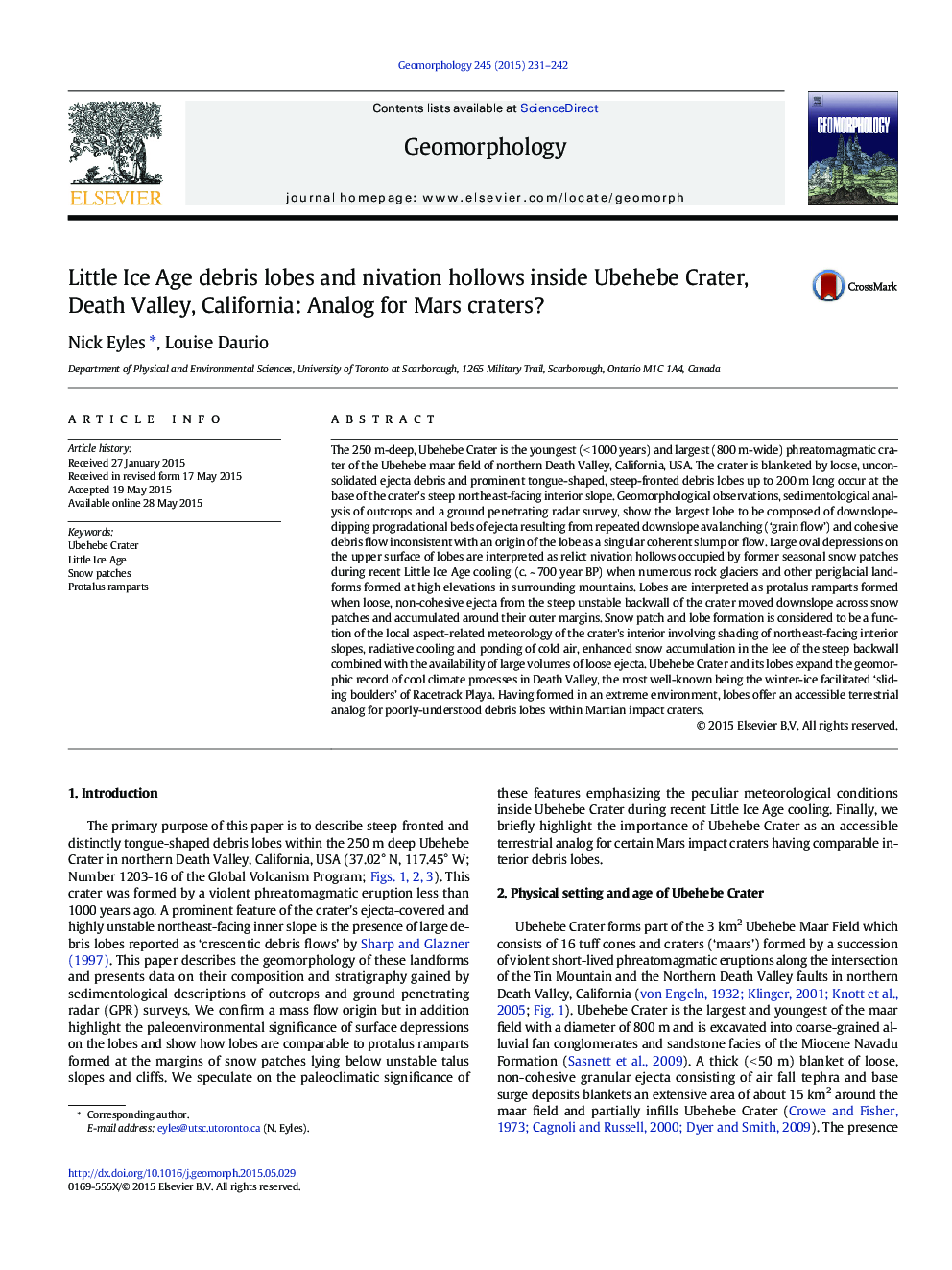| کد مقاله | کد نشریه | سال انتشار | مقاله انگلیسی | نسخه تمام متن |
|---|---|---|---|---|
| 4684170 | 1635404 | 2015 | 12 صفحه PDF | دانلود رایگان |
• Lobate debris accumulations are located within Ubehebe Volcanic Crater.
• Lobes are believed to be protalus ramparts dating back to the Little Ice Age.
• This paper adds to body of work on relict Death Valley cold climate features.
• Cold climate features found may be analogous to Martian geomorphology.
The 250 m-deep, Ubehebe Crater is the youngest (< 1000 years) and largest (800 m-wide) phreatomagmatic crater of the Ubehebe maar field of northern Death Valley, California, USA. The crater is blanketed by loose, unconsolidated ejecta debris and prominent tongue-shaped, steep-fronted debris lobes up to 200 m long occur at the base of the crater's steep northeast-facing interior slope. Geomorphological observations, sedimentological analysis of outcrops and a ground penetrating radar survey, show the largest lobe to be composed of downslope-dipping progradational beds of ejecta resulting from repeated downslope avalanching (‘grain flow’) and cohesive debris flow inconsistent with an origin of the lobe as a singular coherent slump or flow. Large oval depressions on the upper surface of lobes are interpreted as relict nivation hollows occupied by former seasonal snow patches during recent Little Ice Age cooling (c. ~ 700 year BP) when numerous rock glaciers and other periglacial landforms formed at high elevations in surrounding mountains. Lobes are interpreted as protalus ramparts formed when loose, non-cohesive ejecta from the steep unstable backwall of the crater moved downslope across snow patches and accumulated around their outer margins. Snow patch and lobe formation is considered to be a function of the local aspect-related meteorology of the crater's interior involving shading of northeast-facing interior slopes, radiative cooling and ponding of cold air, enhanced snow accumulation in the lee of the steep backwall combined with the availability of large volumes of loose ejecta. Ubehebe Crater and its lobes expand the geomorphic record of cool climate processes in Death Valley, the most well-known being the winter-ice facilitated ‘sliding boulders’ of Racetrack Playa. Having formed in an extreme environment, lobes offer an accessible terrestrial analog for poorly-understood debris lobes within Martian impact craters.
Journal: Geomorphology - Volume 245, 15 September 2015, Pages 231–242
